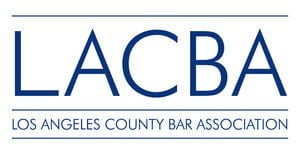DRUG POSSESSION & MARIJUANA PENALTIES IN CALIFORNIA
Drug possession is the crime of having or possessing illegal drugs, either for use, sale, purchase, or distribution. California law uses different categories to address illegal drug possession crimes and each has its penalties and repercussions. Conviction of a misdemeanor or a felony depends on two main types of possession: simple possession or possession for sale.
Moreover, the state of California categorizes drug-related crimes as either possession of restricted drugs or those related to marijuana. The California Health and Safety Code contains a list of all drugs that are labeled restricted or illegal. The code matches each drug offense to its respective penalties.
As mentioned, drug possession penalties are based on the type of drug and possession. The California Health and Safety Code (Sections 11054 through Section 11056) provides a detailed description of the drugs according to schedules. For example, Schedule II names all the illegal narcotics and opiates, while Schedule III describes hallucinogens. Below is how the California Health and Safety Code determines the penalties for various drug categories.
Penalties for Simple Drug Possession
Schedule I opiates, opium derivatives, cocaine base, mescaline, peyote, or synthetic cannabis, Schedule II narcotics or opiates, Schedule III hallucinogens, and Schedule III, IV or V charged with a misdemeanor, he or she can face:
a) up to one year in a county jail
b) a fine of $1,000
If a person is convicted of drug possession as a felony, he or she may face sentencing up to a year in county jail according to HSC Penal Code 11350.
*Wobbler cases are those in which the drugs in question belong to a small group of depressants. The court incriminates wobble cases based on prior convictions.
Penalties for Drug Possession for Sale
Drug possession for sale as a felony, he or she may face sentencing of:
- up to a year county jail, or
- by two (2), three (3) or four (4) years in the California state prison and
- a maximum $20,000 fine.
- additional sentencing from three (3) to twenty-five (25) years depending on the weight of narcotics if the drug in question is heroin or cocaine based.
Prosecution is also based on whether the drugs in possession are for personal use, sale, distribution, cultivation, and/or other factors. Below is a concise table of how the Adult Use of Marijuana Act Prop. 64 determines the penalties for Marijuana use from NORML.
Marijuana Penalties
Personal Use Offense
- Up to 1 oz
- No penalty
- Incarceration: None
- Max Fine: $0
- 28.5 grams or less, over 18 years, and occurred on school grounds
- Penalty: Misdemeanor
- Incarceration: 10 days
- Max Fine: $500
- 28.5 grams or less, under 18 years
- Penalty: Misdemeanor
- Incarceration: 10 days* (Detention center)
- Max Fine: $250
- More than 28.5 grams
- Penalty: Misdemeanor
- Incarceration: 6 months
- Max Fine: $500
- With Intent to Distribute any amount
- Penalty: Misdemeanor
- Incarceration: 6 months
- Max Fine: $500
Sale or Delivery Offense
- Any amount
- Penalty: Misdemeanor
- Incarceration: 6 months
- Max Fine: $500
- Gift of 28.5 grams or less
- No penalty
- Incarceration: N/A
- Max Fine: $100
- Over 18 years to an individual 14-17 years
- Penalty: Felony
- Incarceration: 3 – 5 years
- Max Fine: N/A
- Over 18 years to an individual under 14 years
- Penalty: Felony
- Incarceration: 3 – 7 years
- Max Fine: N/A
Cultivation Offense
- Up to 6 plants
- No penalty
- Incarceration: None
- Max Fine: $0
- 6 plants or more
- Penalty: Misdemeanor
- Incarceration: 6 months
- Max Fine: $500
Hash & Concentrates Offense
- Up to 8 g
- No penalty
- Incarceration: None
- Max Fine: $0
- 8 g or more
- Penalty: Misdemeanor
- Incarceration: 6 months
- Max Fine: $500
- Unauthorized manufacture
- Penalty: N/A
- Incarceration: 16 months – 3 years
- Max Fine: $500
- Chemical manufacture
- Penalty: N/A
- Incarceration: 3 – 7 years
- Max Fine: $50,000
Paraphernalia Offense
- Sale, delivery, possession with intent and manufacture with intent
- Penalty: Misdemeanor
- Incarceration: 15 days – 6 months
- Max Fine: $500
- Involving a minor at least 3 years junior
- Penalty: Misdemeanor
- Incarceration: 1 year
- Max Fine: $ 1,000
This list is non-exhaustive and only presents general figures. Any attempt to name every single drug possession crime would mean mentioning the entire California Health and Safety Code and its related legislation such as the Adult Use of Marijuana Act and the Uniform Controlled Substance Act. Do not worry. There is a simple way you can gauge whether you are liable to a drug possession charge and we can sum it up as follows:
- The type of drug (Restricted or marijuana)
- The amount of the drugs (Anything above 28.5 grams for personal use is liable for misdemeanor charges)
- The location of the offense (On private property or public property)
- Who you’re indulging with (This matters if there’s a minor involved)
- Intent to distribute or sell (6 months for a misdemeanor and 3-7 years for felony charges)
With these basic points in check, a drug possession charge is unlikely. But what happens if you turn out to be unlucky and find yourself with drug possession charges? Who do you call? You have the right to seek legal counsel. Don Hammond can help remedy the situation or prevent any further escalation.










